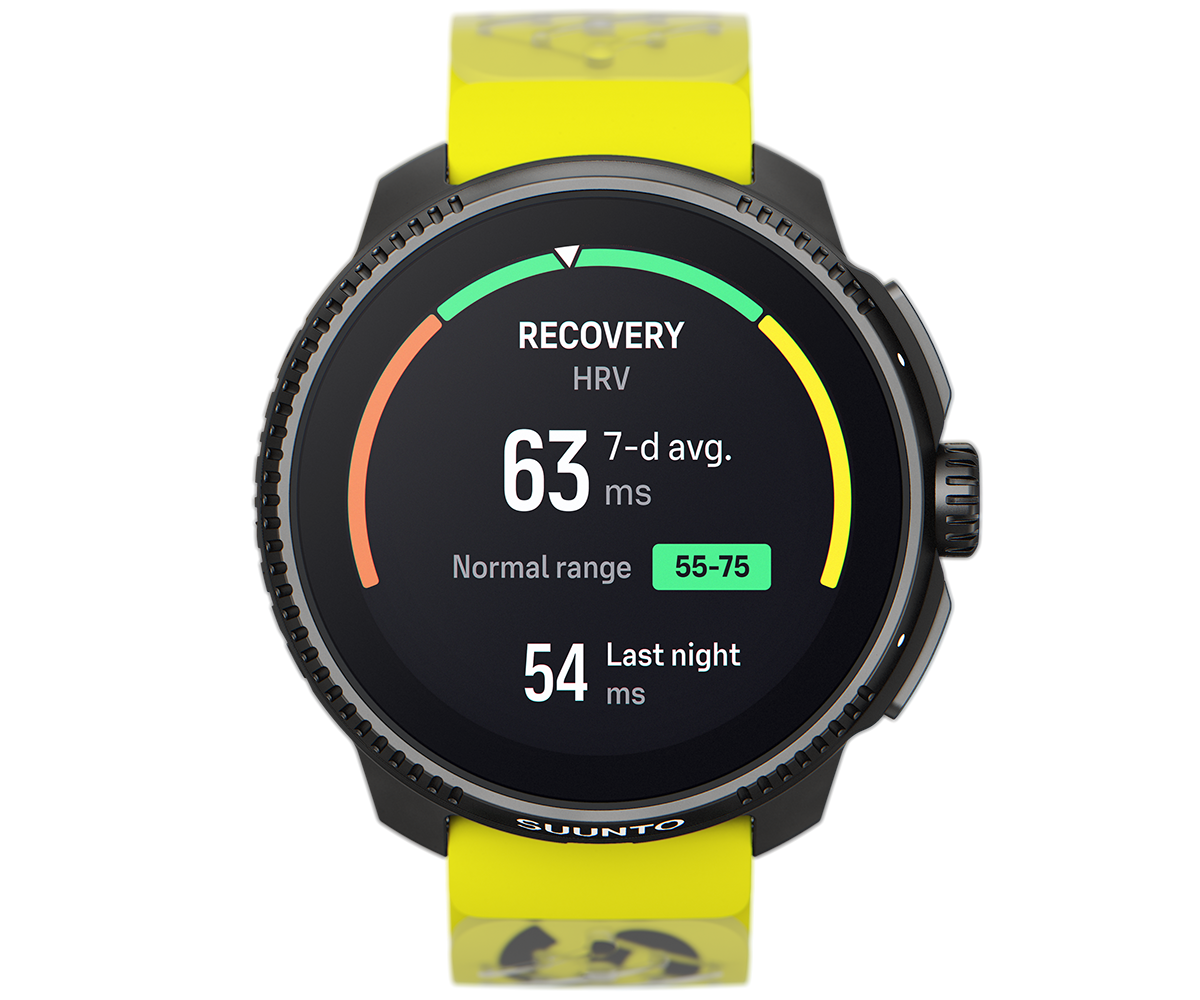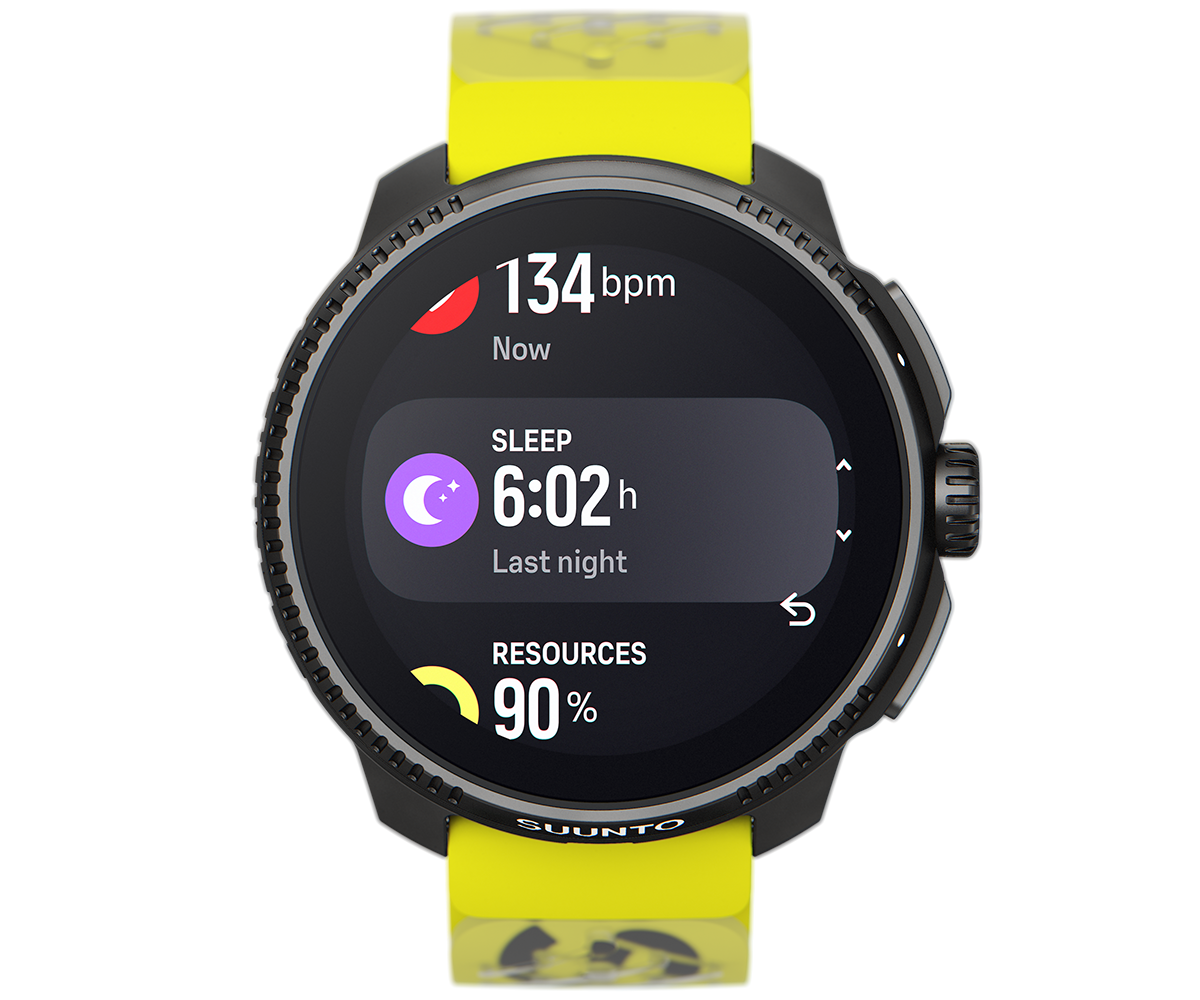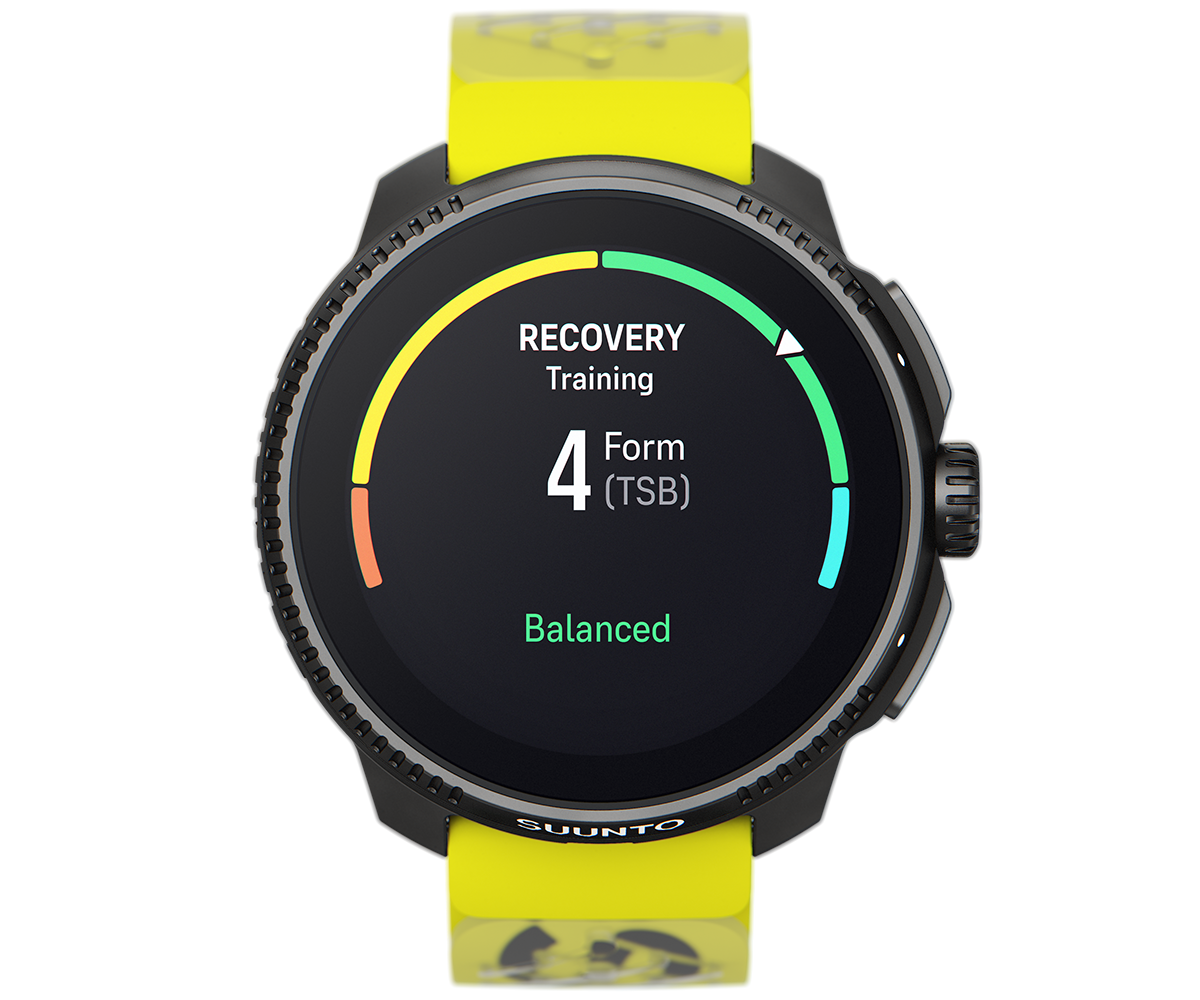Recovery is a crucial component of training that allows the body to repair and adapt to the stress of exercise. During recovery, the body replenishes energy stores, repairs damaged muscle tissue and strengthens muscles and connective tissue to better handle future physical demands. Without adequate recovery, the body may become overtrained, leading to fatigue, decreased performance, and increased risk of injury.
Suunto GPS watches and Suunto app’s Training Zone collect and help you analyze your recovery based on indicators like heart rate variability, sleep, training stress balance and subjective feeling after workouts.
Monitor recovery with heart rate variability
Heart Rate Variability (HRV) measures the variation in time between consecutive heartbeats, providing valuable insights into the balance of the autonomic nervous system and overall health. HRV is not just about heart rate but the fluctuations in the intervals between beats.
A higher HRV generally indicates a more adaptable autonomic nervous system, reflecting the body's ability to handle stress effectively. Various factors, including intense training, mental stress, or illness, can influence HRV readings. Suunto Race, Suunto Vertical, and Suunto 9 Peak Pro offer HRV tracking during sleep, providing a reliable and easy way to gather comparable data.

Interpreting HRV data is highly individual, and higher values usually signify better autonomic balance within an individual's normal range. Suunto defines an individual's normal range over 60 days, comparing the rolling seven-day average with that baseline.
Consistently low HRV values may indicate a compromised recovery state due to factors like chronic stress, inadequate sleep, overtraining, or underlying health issues. After intense efforts or races, it's normal for HRV to temporarily drop below the normal range. Abnormally high HRV, indicated by a yellow or red warning in the app, may suggest excessive recovery (parasympathetic nervous system activity), often in response to accumulated stress.
Learn more about HRV tracking with Suunto

Understand how much sleep you are getting
Sleep plays a crucial role in recovery by allowing the body to repair and regenerate tissues that have been damaged during exercise. During sleep, the body releases growth hormone, which helps build and repair muscles, and the immune system releases cytokines, which fight off inflammation and infection. Additionally, sleep helps regulate hormones that affect appetite and metabolism, which can impact weight management and overall health.
Lack of sleep can lead to decreased performance, increased risk of injury, and other negative health consequences. To optimize recovery, athletes should aim for at least 7-9 hours of quality sleep per night and establish a regular sleep routine that includes a consistent bedtime and wake-up time.
To track sleep, you need to enable sleep tracking in the watch settings and wear the watch during sleep. In the settings, you also define your bedtime. Your watch uses that period to determine when you are sleeping (during your bedtime) and reports all sleep as one session. If you get up for a drink of water during the night, for example, your watch still counts any sleep after that as the same session.
When you wake up, you are greeted with a summary of your sleep. The summary includes, for example, your average and minimum heart rate, and the total duration of your sleep, as well as the estimated time you were awake and the time you were in deep sleep.

In addition to the sleep summary, you can follow your overall sleep trend with the sleep widget on your Suunto Vertical, Suunto Race and Suunto 9 Peak Pro. When you sync your watch with the Suunto app, you will see more sleep data and trends.
Read about six ways to improve your sleep
Know the balance between your long and short-term training load
Training stress score (TSS) is a metric that quantifies the stress training puts on your body. Over time, this load adds up. This is illustrated by Acute Training Load (ACL), the weighted seven-day average of your TSS, and Chronic Training Load (CTL), the weighted 42-day average of your TSS. CTL is also called ‘fitness’ as it indicates how much – or how hard – you’ve been training.

When you compare these two cumulative training stress metrics, you get Training stress balance (TSB). If your acute load is smaller than the chronic load, your Training stress balance is positive: your training recently has been lighter than over the past several weeks.
A positive TSB indicates that you are adequately recovered and may be ready to increase your training load, while a negative TSB suggests that you may need more rest or recovery time before increasing your workload. By using TSB as a guide, you can optimize your training and reduce the risk of injury or burnout.
Learn more about Training stress score
Trust your subjective feelings as well
Monitoring feelings after an activity can provide valuable insight into your overall recovery status. If your feelings after exercise start to trend downward, something is not right. You may be pushing too hard, not recovering well enough or might be getting sick. Consider taking a break or doing something different for a change
You can add your feeling on your watch when saving an activity. You can then view the feeling trend in the Suunto app’s Training zone. The app shows your subjective, after-workout feeling for both the current week and the previous six weeks.
Learn who is having the most fun exercising (based on data)